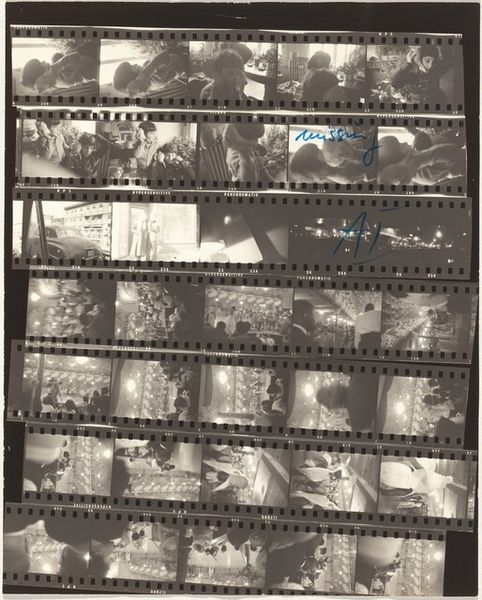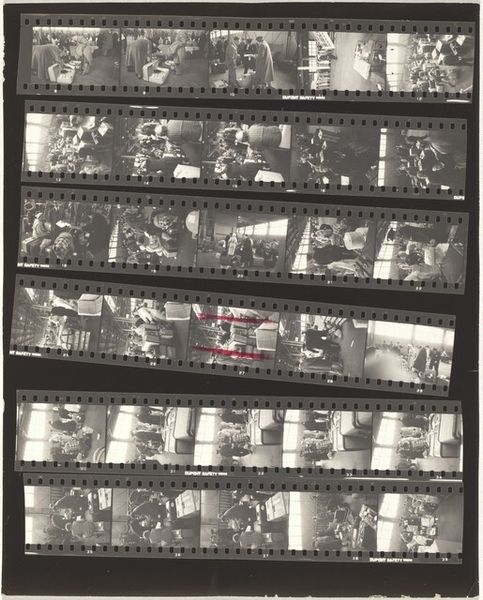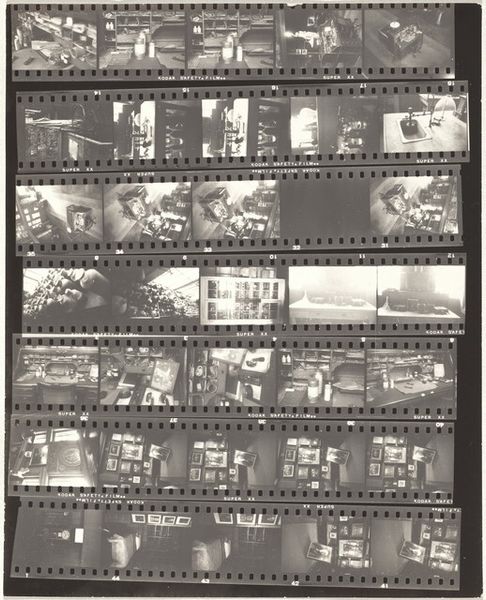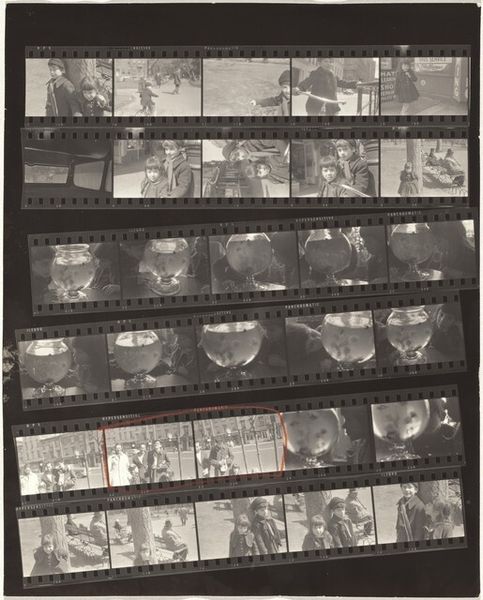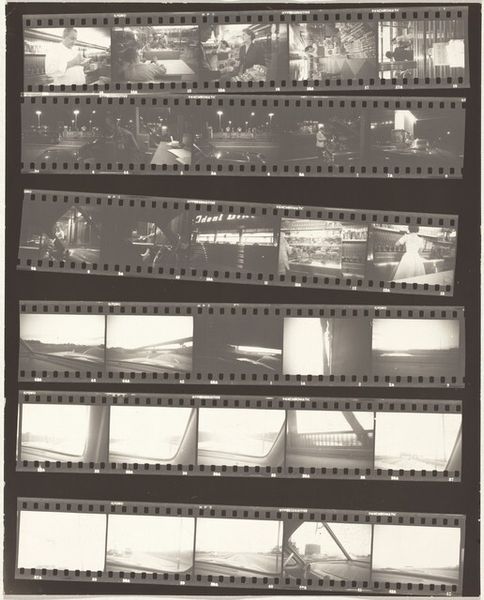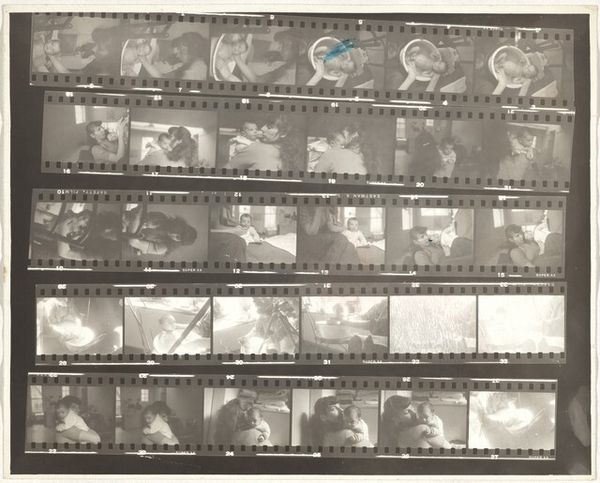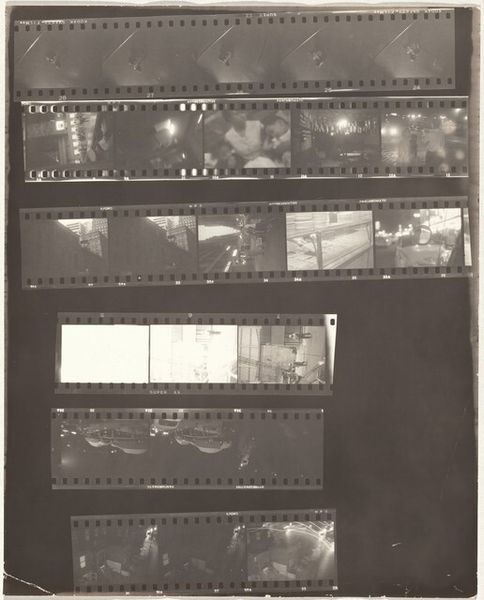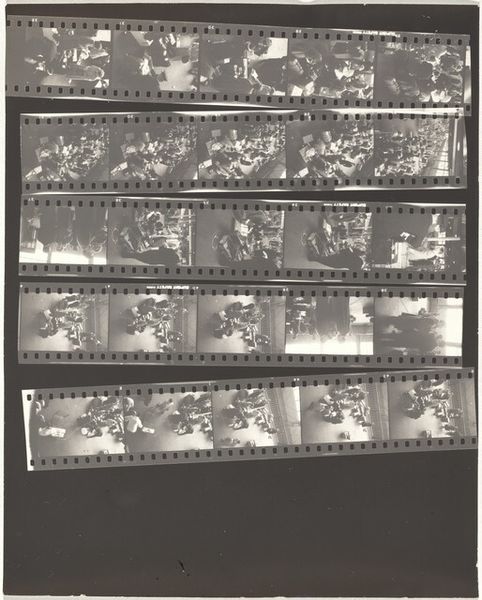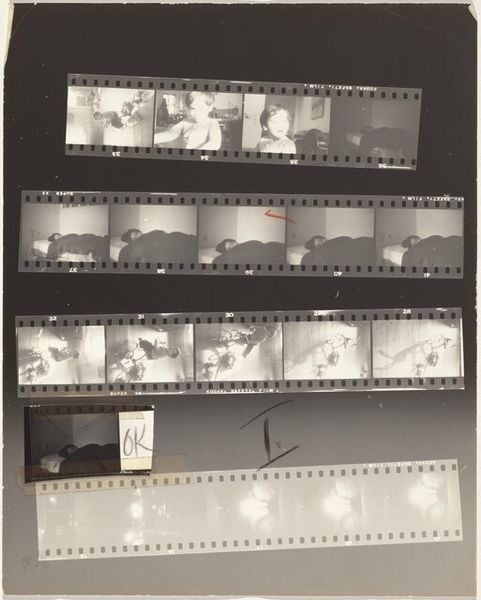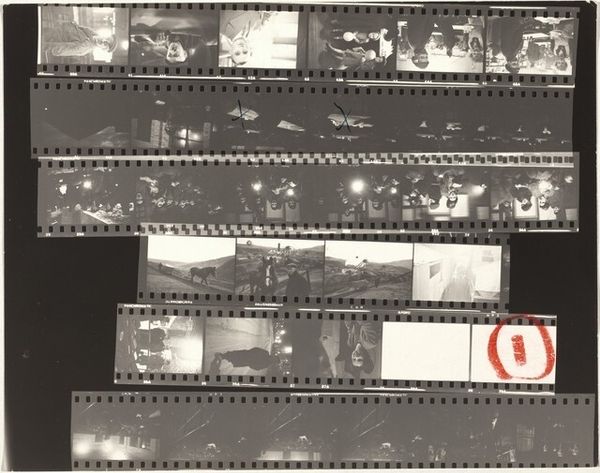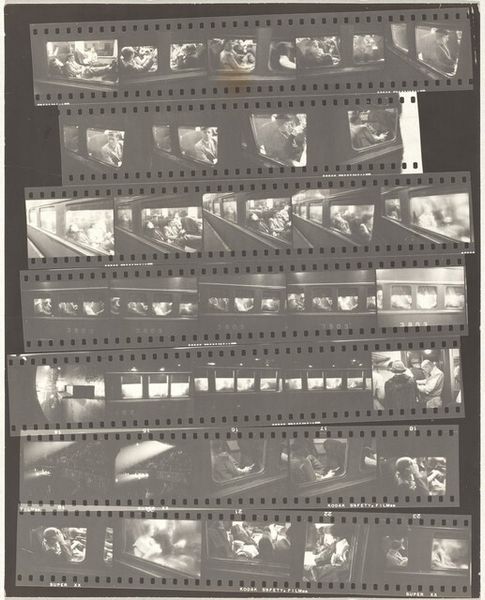
Dimensions: overall: 20.2 x 25.2 cm (7 15/16 x 9 15/16 in.)
Copyright: National Gallery of Art: CC0 1.0
Curator: At first glance, the immediate feeling that washes over me is one of fragmented nostalgia. It feels deeply personal and reminiscent of another time, but it’s obscured, veiled in a way. Editor: That's quite astute. We're looking at a gelatin-silver print by Robert Frank titled "Place de la Bastille—Paris 20," created in 1959. What you're seeing is the raw material of image making. It offers such rare insight into the artist’s creative process. The images document urban scenes captured on a roll of 35mm film. Curator: Ah, I see now. So, the sequence itself becomes part of the visual narrative. I can almost feel Frank pacing the streets, seeking out these urban vignettes. The contact sheet holds symbols from French visual history—the architecture of Paris and streetlamps become more abstract when seen altogether. Editor: Exactly! By presenting these photos within their original context—the contact sheet—Frank emphasizes the act of observation itself. He invites us to see the overlooked details that are inherently human, while challenging the notion of the single, perfect image. We see his choices; the editing, if you will. Curator: I appreciate the social implications of highlighting Paris’ urban environment and architecture. The streets and city squares become spaces for interaction. To view all these images, captured on the same roll, asks: How do these places contribute to the shaping of the Parisian people's social realities, political beliefs, and experiences of freedom? Editor: It also challenges the viewer to make connections. Does that scratched-out image of a lamppost speak to you differently knowing the unedited selections in subsequent frames? There's the tower standing prominently in other shots—a symbol of Parisian resilience and history. Frank’s artistic decision elevates seemingly simple scenes. This creates a narrative far greater than any of these shots could accomplish alone. Curator: Seeing it this way encourages contemplation of what it meant to walk those streets in 1959. There is cultural memory within this. I feel invited to weave together individual stories that speak to an enduring moment in Parisian history. Editor: Precisely. Frank's presentation allows us to view these historical scenes through an honest lens—challenging viewers to confront urban landscapes with increased social consciousness. What you see reflected depends greatly on your point of view.
Comments
No comments
Be the first to comment and join the conversation on the ultimate creative platform.

